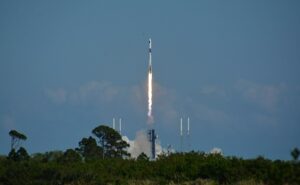Following a successful launch of NASA’s SpaceX 30th commercial resupply mission, new scientific experiments and technology demonstrations for the agency are on the International Space Station, including studies of technologies to measure sea ice and plant growth in space.
SpaceX’s Dragon resupply spacecraft, which carried more than 6,000 pounds of cargo to the orbiting laboratory, launched on the company’s Falcon 9 rocket at Space Launch Complex 40 at Cape Canaveral Space Force Station in Florida.
 The cargo spacecraft autonomously docked at the space station on March 23rd, at approximately 7:30am and will remain at the orbital outpost for about a month.
The cargo spacecraft autonomously docked at the space station on March 23rd, at approximately 7:30am and will remain at the orbital outpost for about a month.
The Dragon delivered a new set of sensors for Astrobee robots to support automated 3D sensing, mapping, and situational awareness functions. These systems could support future Gateway and lunar surface missions by providing automated maintenance and surface scanning using rovers.
Additionally, the spacecraft delivered BurstCube, a small satellite that is designed to study gamma-ray bursts that occur when two neutron stars collide. This satellite could widen our coverage of the gamma-ray sky, improving our chances of studying bursts both with light and gravitational waves, or ripples in space-time, detected by ground-based observatories.
Finally, the spacecraft also delivered sampling hardware for Genomic Enumeration of Antibiotic Resistance in Space (GEARS), an initiative that will test different locations of the space station for antibiotic-resistant microbes. In-flight gene sequencing could show how these bacteria adapt to the space environment, providing knowledge that informs measures to protect astronauts on future long-duration missions.
Advances from this scientific research will help keep astronauts healthy during long-duration space travel and demonstrate technologies for future human and robotic exploration beyond low Earth orbit to the Moon through NASA’s Artemis campaign, in advance of the first crewed mission to Mars.
These are just a few of the hundreds of investigations conducted aboard the orbiting laboratory in the areas of biology and biotechnology, physical sciences, and Earth and space science.


